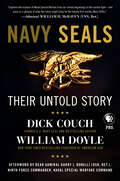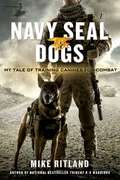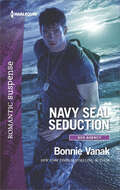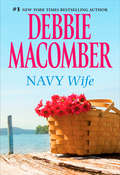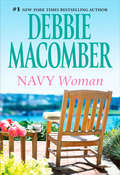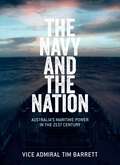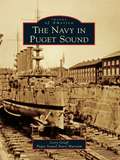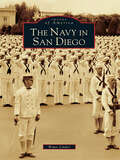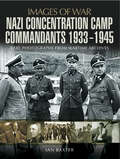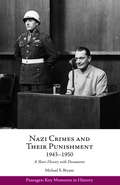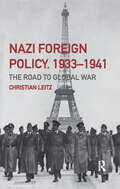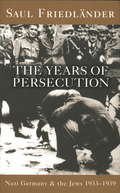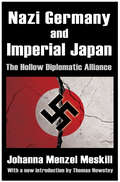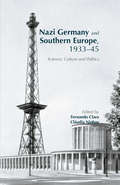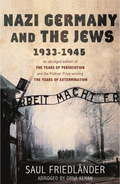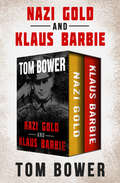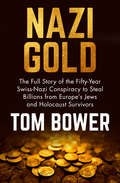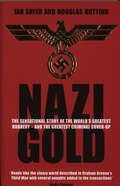- Table View
- List View
Navy SEALs: Their Untold Story
by Dick Couch William Doyle“[The] definitive history of the U.S. Navy SEALs and their forefathers” (Master Chief Bill Bruhmuller (USN, Ret.), founding member of SEAL Team two).Written with the unprecedented cooperation of the Naval Special Warfare community, this vivid and definitive history of the U.S. Navy SEALs reveals the inside story behind the greatest combat operations of America’s most celebrated warriors. New York Times–bestselling authors Dick Couch—a former SEAL—and William Doyle chart the SEALs’ story, from their origins in the daring Naval Combat Demolition Teams, Underwater Demolition Teams, Scouts and Raiders commando units, and OSS Operational Swimmers of World War II to their coming of age in Vietnam and rise to glory in Iraq and Afghanistan after 9/11.Illustrated with forty pages of photographs and based on exclusive interviews with more than 100 U.S. frogmen (including multiple Medal of Honor recipients), here is “the first comprehensive history of the special operations force” (Military.com).
Navy Seal Dogs: My Tale Of Training Canines For Combat
by Michael RitlandRitland's prior "Trident K9 Warriors" gave readers an inside look at the training of military war dogs. Now he gives readers an inside look specifically at the Navy SEAL teams' elite K9 warriors--who they are, how they are trained, and the extreme missions they undertake to save lives. From detecting explosives to eliminating the bad guys, these powerful dogs are also some of the smartest and highest skilled working animals on the planet. Mike Ritland's job is to train them. This special edition re-telling presents the dramatic tale of how Ritland discovered his passion and grew up to become the trainer of the nation's most elite military working dogs. Ritland was a smaller-than-average kid who was often picked-on at school--which led him to spend more time with dogs at a young age. After graduating BUD/S training--the toughest military training in the world--to become a SEAL, he was on combat deployment in Iraq when he saw a military working dog in action and instantly knew he'd found his true calling. Ritland started his own company to train and supply working and protection dogs for the U. S. Government, Department of Defense, and other clients He also started the Warrior Dog Foundation to help retired Special Operations dogs live long and happy lives after their service. Navy SEAL Dogs is the true story of how Mike Ritland grew from a skinny, bullied child, to a member of our nation's most elite SEAL Teams, to the trainer of the world's most highly skilled K9 warriors.There are various types of end-of-book information, plus captions from 15 pages of photos, with added image description when appropriate.
Navy Seal Seduction: A Military Romantic Suspense Novel (SOS Agency #1)
by Bonnie VanakNew York Times–Bestselling Author: A Navy SEAL takes on a death-defying assignment to save the ex-wife he still hasn’t gotten over . . .With the island nation of St. Marc erupting in civil war, SEAL Jarrett Adler must rescue the woman he never got over—his alluring ex-wife, Lacey. Jarrett regrets failing her as a husband, and he hopes protecting her will offer a second chance to win her trust.As charming and sexy as Jarrett still is, Lacey knows he won’t stick around. She’s found her niche in nonprofit work and longs to create a family of her own. But when death threats and bombs arrive at her door, she turns to the man who still holds her heart. Can Jarrett and Lacey navigate their way home—and back into each other’s arms?
Navy Wife (Navy #1)
by Debbie MacomberImpulsive, wounded, vulnerable, Lindy Kyle was unprepared for a roommate like Rush Callaghan. Strong, sensitive and sexy, the temporarily dry-docked naval officer was everything she'd ever dreamed of in a man...in a husband. But Rush placed duty to his country above all else. Though he and Lindy were swept away on a tide of passion, he was called back to sea. They say absence makes the heart grow fonder - but will their marriage survive their partings?
Navy Woman (Navy #4)
by Debbie MacomberBusy attorney Catherine Fredrickson loved her job at a submarine base in Washington, but her new boss, Royce Nyland, had her spirits sinking fast. The icy widower was distant, demanding...and incredibly attractive. And though he kept her at arm's length, he aroused a stormy passion in Catherine that was impossible to deny. Already struggling to keep afloat while caring for his energetic daughter, Royce didn't need any more distractions - especially not in the form of an appealing woman! Though the laws of the sea deemed naval fraternizing strictly taboo, how long could Royce resist romance when just the sight of Catherine capsized his vulnerable heart?
Navy and the Nation: Australia's Maritime Power in the 21st Century
by Tim BarrettThe Royal Australian Navy is at a watershed moment in its history. Major reinvestment following the 2016 Defence White Paper will see it re-equipped with offshore patrol boats, a new class of frigate, a modern and expanded submarine force and an air warfare destroyer.How does the Navy best prepare for the future? Vice Admiral Tim Barrett forcefully argues the answer is by reimagining the way the Navy views itself, especially its domestic and international relationships.In The Navy and the Nation Vice Admiral Barrett outlines the extensive opportunities for the service and Australia if the Navy is embraced as a national enterprise.
Navy in Newport, The (Images of America)
by Lionel D. WyldKnown throughout the world as "The City by the Sea," Newport, Rhode Island, has a long history of maritime activity. Since the Colonial period, Newport has been recognized as both an important seaport for the mercantile trade and a harbor of inestimable value for naval vessels. I n 1869, the U.S. Navy opened its pioneer site in the region, the Naval Torpedo station on Goat Island in Newport harbor. The Naval War College on Coasters Harbor Island and the Naval Training Station soon followed. The navy's presence expanded through two world wars; and in the 1940s the U.S. Naval Operating Base with headquarters in Newport, included extensive naval facilities on both sides of Narragansett Bay. Today, Newport remains an integral site of naval training, research, and development. The prestigious Naval War College, the Naval Education and Training Center, and other navy command schools, in addition to the Naval Undersea Warfare Center with its Division Newport, have kept this branch of the armed services a leading employer in Rhode Island and southeastern New England.
Navy in Puget Sound, The (Images of America)
by Cory Graff Puget Sound Navy MuseumEven before settlers came to the Puget Sound, the U.S. Navy was exploring the sheltered inlets and deep water ports of what was dubbed "America's Mediterranean." In 1856, the sailors of the navy warship Decatur repelled an attack by Native Americans, saving a tiny village on the shores of Elliott Bay named Seattle. In the ensuing years, Puget Sound became the West Coast's premier port of call for the navy's vessels and aircraft operating in the vast Pacific Ocean. During World War II, the region turned out a long line of combat and support vessels while quickly repairing many other ships that had been horribly damaged in clashes with the Japanese. In both peace and war, the communities of Puget Sound and the U.S. Navy have shared an enduring partnership that remains today.
Navy in San Diego, The (Images of America)
by Bruce LinderSan Diego has never been afraid to call itself a "Navy Town," and the positive and inspiring link between the navy and the city knows no equal across the country. For over 150 years, beginning with the U.S. Navy's capture of the city for the United States in the opening days of the Mexican War, the navy has been an indelible part of San Diego's lifestyle, culture, and vitality. Not only has the navy formed the bedrock of the region's economy, but it has helped shape the population while endowing the city with a sense of international and cosmopolitan awareness that separates San Diego from many other cities of its size. San Diego and its navy enjoy a special relationship, one deeply rooted in historic perspective that renews itself with eachpassing year.
Navy's Needs In Space For Providing Future Capabilities
by National Research Council of the National AcademiesThe United States must operate successfully in space to help assure its security and economic well being. The Department of the Navy is a major user of space capabilities, although those capabilities are now primarily provided by DOD, the Air Force, and NOAA. Following a DOD assessment of national space security management in 2001, the Navy commissioned a Panel to Review Space to assess Navy space policy and strategy. As an extension of that review, the NRC was requested by the Navy to examine its needs in space for providing future operational and technical capabilities. This report presents a discussion of the strategic framework of future space needs, the roles and responsibilities for meeting those needs, an assessment of Navy support to space mission areas, and a proposed vision for fulfilling Naval forces space needs.
Nazi Billionaires: The Dark History of Germany's Wealthiest Dynasties
by David de Jong“A provocative group portrait of five industrialists who expanded their fortunes by colluding with Hitler and then, after World War II, walked away with minimal punishment and barely a dent in their bottom lines... In this meticulously researched book, Mr. de Jong, an investigative journalist and former reporter at Bloomberg News, compels us to confront the current-day legacy of these Nazi ties."—The Wall Street JournalA groundbreaking investigation of how the Nazis helped German tycoons make billions off the horrors of the Third Reich and World War II—and how America allowed them to get away with it.In 1946, Günther Quandt—patriarch of Germany’s most iconic industrial empire, a dynasty that today controls BMW—was arrested for suspected Nazi collaboration. Quandt claimed that he had been forced to join the party by his archrival, propaganda minister Joseph Goebbels, and the courts acquitted him. But Quandt lied. And his heirs, and those of other Nazi billionaires, have only grown wealthier in the generations since, while their reckoning with this dark past remains incomplete at best. Many of them continue to control swaths of the world economy, owning iconic brands whose products blanket the globe. The brutal legacy of the dynasties that dominated Daimler-Benz, cofounded Allianz, and still control Porsche, Volkswagen, and BMW has remained hidden in plain sight—until now.In this landmark work of investigative journalism, David de Jong reveals the true story of how Germany’s wealthiest business dynasties amassed untold money and power by abetting the atrocities of the Third Reich. Using a wealth of untapped sources, de Jong shows how these tycoons seized Jewish businesses, procured slave laborers, and ramped up weapons production to equip Hitler’s army as Europe burned around them. Most shocking of all, de Jong exposes how America’s political expediency enabled these billionaires to get away with their crimes, covering up a bloodstain that defiles the German and global economy to this day.
Nazi Concentration Camp Commandants, 1933–1945: Rare Photographs From Wartime Archives (Images of War)
by Ian BaxterUsing many rare and unpublished images this book identifies and delves into the characters of the notorious men who were instrumental in one of the greatest crimes against humanity in World history.Through words and pictures the chilling truth emerges. In many respects these monsters were all too normal. Rudolf Hess, the Commandant of Auschwitz, was a family man and hospitable host and yet while there is no record of his committing acts of violence personally he presided over a regime that accounted for over a million deaths. Others such as Amon Goeth and Josef Kramer personally promoted violence and terror and took pleasure from ever more brutal practices. They were competitive in obtaining 'results'. While following orders from above they did not hesitate to use their own initiative in pursuit of their barbaric objectives.Every occupied country in Europe was touched by the 'Final Solution' and despite the capture, trials and punishment of these leading perpetrators the stain of man's inhumanity to man, woman and child remains ineradicable.Justice came too late for millions but the lessons learnt must never be forgotten and this book throws new light on the managers of the murderous Holocaust process.
Nazi Crimes and Their Punishment, 1943-1950: A Short History with Documents (Passages: Key Moments in History)
by Michael S. Bryant&“With this timely book in Hackett Publishing's Passages series, Michael Bryant presents a wide-ranging survey of the trials of Nazi war criminals in the wartime and immediate postwar period. Introduced by an extensive historical survey putting these proceedings into their international context, this volume makes the case, central to Hackett's collection for undergraduate courses, that these events constituted a 'key moment' that has influenced the course of history. Appended to Bryant's analysis is a substantial section of primary sources that should stimulate student discussion and raise questions that are pertinent to warfare and human rights abuses today.&” —Michael R. Marrus, Chancellor Rose and Ray Wolfe Professor Emeritus of Holocaust Studies at the University of Toronto
Nazi Foreign Policy, 1933-1941: The Road to Global War
by Christian LeitzHow did the Second World War come about? Nazi Foreign Policy, 1933-1941 provides lucid answers to this complex question. Focusing on the different regions of Nazi policy such as Italy, France and Britain, Christian Leitz explores the diplomatic and political developments that led to the outbreak of war in 1939 and its transformation into a global conflict in 1941.Nazi Foreign Policy, 1933-1941 details the history of Nazi Germany's foreign policy from Hitler's inauguration as Reich Chancellor to the declaration of war by America in 1941. Christian Leitz gives equal weight to the attitude and actions of the Nazi regime and the perspectives and reactions of the world both before and during the war.
Nazi Germany (Idiot's Guides)
by Alan Axelrod Robert Smith ThompsonUnderstand the rise of a dangerous ideology.There is renewed interest in the Nazi Party that ruled Germany as a fascist state from 1933 to 1945 under the leadership of Adolf Hitler. However, the events that led to the rise of Nazism--and the near victory of the Axis Powers in World War II--date back to the economics and politics of 1860s Europe.From facts about the iron-fisted rulers who forged a new German empire to clear analysis of the Third Reich's psychological, political, and military underpinnings, learn all there is to know about the rise and fall of Hitler's Nazi Germany, including:The unification of Germany and the formation of the first empire under Prussian chancellor Otto von BismarckHow the Versailles Treaty's disarmament of Germany after World War I failed to ensure peaceAdolf Hitler's evolution from an imprisoned revolutionary to Nazi dictatorThe Nazi reign over Germany and occupied countries--including the military strategies of World War IIThe German military officers who plotted to assassinate HitlerThe justifications behind the Nuremberg trials
Nazi Germany And The Jews: 1933-1939
by Prof Saul FriedlanderA magisterial history of the Jews in Nazi Germany and the regime's policies towards them in the years prior to World War II and the Holocaust. Written by arguably the world's leading scholar on the subject.Himself a survivor, Friedlander has been a leading figure in Holocaust studies for decades and this book represents a definitive summing up of his research and that of hundreds of other historians. NAZI GERMANY AND THE JEWS: THE YEARS OF PERSECUTION is perhaps the richest examination of the subject yet written, and, crucially, one that never loses sight of the experiences of individuals in its discussion of Nazi politics and the terrible statistics and technological and administrative sophistication of the Final Solution.
Nazi Germany And the Jews: 1939-1945
by Prof Saul FriedlanderThe second and concluding volume of the definitive two-volume account of the HolocaustWith THE YEARS OF EXTERMINATION, Friedlander completes his work on Nazi Germany and the Jews. The book describes and interprets the history of the persecution and murder of the Jews throughout occupied Europe. The implementation of German extermination policies and measures depended on the submissiveness of political authorities, the assistance of local police forces and the passivity or co-operation of the populations, primarily of their political and spiritual elites. The implementation also depended on the readiness of the victimes to submit to orders, often with the hope of modifying them or surviving long enough to escape the German vice.This multifaceted representation - at all levels and in all different places - enhances the perception of the magnitude, complexity and interrelatedness of the multiple components of this history. Based on a vast variety of documents and an overwhelming choir of voices, Friedlander manages to avoid domesticating the memory of unparalleled and horrific events. The convergence of these various aspects gives THE YEARS OF EXTERMINATION its unique aulity. In this work the history of the Holocaust has found its definitive representation.
Nazi Germany and Imperial Japan: The Hollow Diplomatic Alliance
by Ian A. McLarenAlliances between sovereign states are among the least stable political associations. Despite professions of fidelity and common purpose, most are effective for only short periods, and only as long as it suits their interests. The German-Japanese alliance of World War II was not so much a marriage of convenience as a long and uneasy engagement. It was maintained because breaking the engagement would have reduced the prestige of each nation-state.Germany and Japan each found the existence and policies of the other convenient. From 1933-1945, both powers challenged the international order; other than this, nothing else united Germany and Japan. Even while they shared some of the same opponents, German and Japanese antagonism toward the Allies involved different objects of contention and questions of timing. Consequently, coordination of German and Japanese policies did not follow.Johanna Menzel Meskill argues that the German-Japanese alliance failed, not only because each power failed separately to attain its goals, but because as allies the powers failed to take advantage of their association. The failure resulted to a large extent from the discordance between their political goals and the means necessary to attain them. This work in diplomatic history is a careful analysis of presuming identities in a world of diplomatic differences.In a new introduction to the book, Thomas Nowotny looks back on the alliance from a historical perspective. He concludes that both parties overestimated the potency and effectiveness of their military power. Like many before and some after, they more generally subscribed to the offensive use of military power and effectiveness that the history of the twentieth centery has proven unwarranted.
Nazi Germany and Southern Europe, 1933-45: Science, Culture and Politics
by Fernando Clara Cláudia Ninhos Sasha GrishinNazi Germany and Southern Europe, 1933-45 is about transnational fascist discourse. It addresses the cultural and scientific links between Nazi Germany and Southern Europe focusing on a hybrid international environment and an intricate set of objects that include individual, social, cultural or scientific networks and events.
Nazi Germany and the Jews, 1933–1945: Abridged Edition
by Saul Friedländer Orna KenanNazi Germany and the Jews, 1933-1945 is an abridged edition of Saul Friedländer's definitive Pulitzer Prize-winning two-volume history of the Holocaust: Nazi Germany and the Jews: The Years of Persecution, 1933-1939 and The Years of Extermination: Nazi Germany and the Jews, 1939-1945.The book's first part, dealing with the National Socialist campaign of oppression, restores the voices of Jews who were engulfed in an increasingly horrifying reality following the Nazi accession to power. Friedländer also provides the accounts of the persecutors themselves—and, perhaps most telling of all, the testimonies of ordinary German citizens who, in general, stood silent and unmoved by the increasing waves of segregation, humiliation, impoverishment, and violence. The second part covers the German extermination policies that resulted in the murder of six million European Jews—an official program that depended upon the cooperation of local authorities and police departments, the passivity of the populations, and the willingness of the victims to submit in desperate hope of surviving long enough to escape the German vise.A monumental, multifaceted study now contained in a single volume, Saul Friedländer's Nazi Germany and the Jews, 1933-1945 is an essential study of a dark and complex history.
Nazi Germany and the Jews: 1933-1945
by Prof Saul FriedlanderAn abridged edition of Saul Friedlander's definitive two-volume history of the Holocaust: THE YEARS OF PERSECUTION and THE YEARS OF EXTERMINATION.Saul Friedlander's historical masterpiece is perhaps the richest examination of the Holocaust yet written, and, crucially, one that never loses sight of the experiences of individuals in its discussion of Nazi politics and the terrible statistics and technological and administrative sophistication of the Final Solution.The book's first part, dealing with the National Socialist campaign of oppression, restores the voices of Jews who were engulfed in an increasingly horrifying reality following the Nazi accession to power. Friedländer also provides the accounts of the persecutors themselves - and, perhaps most telling of all, the testimonies of ordinary German citizens. The second part covers the German extermination policies that resulted in the murder of six million European Jews.
Nazi Germany at War
by Martin KitchenA powerful and absorbing study of the German home front from the outbreak of hostilities to the collapse of the Third Reich. It explores the impact of Nazi domestic policies on the German people, and the effects of the extreme radicalization of the regime under the pressures of total war. It examines the economy, social policy, and the realities of daily life; the part played by the law and the Churches; the changing role of women; the fate of foreign workers, prisoners of war and the Jews; and the extent of resistance to the regime. At its heart is the crucial relationship of the party, the state and public opinion in the Hitler Years.
Nazi Gold and Klaus Barbie
by Tom BowerTwo shocking exposés of Nazi cruelty and international collusion from “one of the finest investigative journalists” (The Washington Times). Nazi Gold: The Full Story of the Fifty-Year Swiss-Nazi Conspiracy to Steal Billions from Europe’s Jews and Holocaust Survivors This riveting exposé reveals the shocking truth about how the Swiss banking industry knowingly collaborated with the Third Reich during the darkest era in modern history. With the knowledge and acquiescence of the Swiss government, hundreds of millions of dollars stolen from Jewish Holocaust victims were systematically hidden away in Swiss bank accounts. For the next half century, Swiss authorities engaged in a covert campaign of lies, subterfuge, and corruption to hide the wealth from its rightful owners—concentration camp survivors and the families of the slain—while freely dispensing the illegally obtained funds to fugitive Nazis. Nazi Gold is an explosive account of state-endorsed crimes and atrocities; of former victims fighting courageously for their due in the face of prejudice, hatred, and indifference; and of the dedicated US Treasury agents who worked tirelessly for decades to right an unconscionable wrong. “Compelling [and] carefully researched.” —The Washington Times Klaus Barbie: The Butcher of Lyons In 1942, SS Gestapo chief Nikolaus “Klaus” Barbie was dispatched to Nazi-occupied France after leaving his bloodstained mark on the Netherlands. In Lyons, Barbie was entrusted with “cleansing” the region of Jews, French Resistance fighters, and Communists, an assignment he undertook with sadistic cruelty. Thousands died on Barbie’s orders. Following the D-Day invasion, Barbie fled, slaughtering all his prisoners. But the war’s conclusion was not the end of the “Butcher of Lyons.” With the dawning of the Cold War, Barbie went on to find a new employer: the US intelligence services. He escaped to South America, where he lived a free man until extradited to France to finally stand trial for war crimes in 1983. “[A] taut, richly backgrounded story.” —Kirkus Reviews
Nazi Gold: The Full Story of the Fifty-Year Swiss-Nazi Conspiracy to Steal Billions from Europe's Jews and Holocaust Survivors
by Tom BowerA &“compelling [and] carefully researched&” account of greed, duplicity, and an unholy partnership between Switzerland and the Third Reich (The Washington Times). In the third and fourth decades of the twentieth century, the European continent fell, nation by nation, to Nazi Germany&’s invincible war machine. But Switzerland remained neutral during World War II, taking no side and bowing to no master. For a long time after, that was the accepted history—but it was a lie. Respected British investigative journalist Tom Bower reveals the shocking truth about how the government of Switzerland and the Swiss banking industry knowingly collaborated with the Reich during the darkest era in modern history. With the knowledge and acquiescence of the Swiss government, hundreds of millions of dollars stolen from Jewish Holocaust victims—including gold teeth extracted from the mouths of those murdered—were systematically hidden away in Swiss bank accounts. But these crimes did not end with the defeat of Hitler. For the next half century, Swiss authorities engaged in a covert campaign of lies, subterfuge, and corruption to hide the wealth from its rightful owners—concentration camp survivors and the families of the slain—while freely dispensing the illegally obtained funds to fugitive Nazis. Written by &“one of the finest investigative journalists in the English-speaking world,&” Nazi Gold is an explosive true account of state-endorsed crimes and atrocities; of former victims fighting courageously for their due in the face of prejudice, hatred, and indifference; and of the dedicated US Treasury agents who worked tirelessly for decades to right an unconscionable wrong (The Washington Times).
Nazi Gold: The Sensational Story of the World's Greatest Robbery – and the Greatest Criminal Cover-Up
by Douglas Botting IAN SAYERIn 1945, as Allied bombers continued their final pounding of Berlin, the panicking Nazis began moving the assets of the Reichsbank south for safekeeping. Vast trainloads of gold and currency were evacuated from the doomed capital of Hitler's 'Thousand-year Reich'. Nazi Gold is the real-life story of the theft of that fabulous treasure - worth some 2,500,000,000 at the time of the original investigation. It is also the story of a mystery and attempted whitewash in an American scandal that pre-dated Watergate by nearly 30 years. Investigators were impeded at every step as they struggled to uncover the truth and were left fearing for their lives. The authors' quest led them to a murky, dangerous post-war world of racketeering, corruption and gang warfare. Their brilliant reporting, matching eyewitness testimony with declassified Top Secret documents from the US Archives, lays bare this monumental crime in a narrative which throngs with SS desperadoes, a red-headed queen of crime and American military governors living like Kings. Also revealed is the authors' discovery of some of the missing treasure in the Bank of England.
